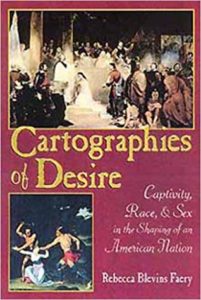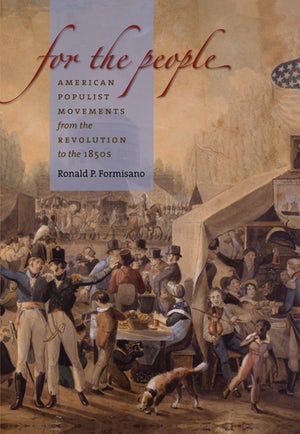“License my roving hands, and let them go / Behind, before, above, between, below / O my America! my new-found-land / My kingdom, safeliest when with one man man’d.” So wrote John Donne, poet, dean of St. Paul’s Cathedral, and onetime Gentleman Adventurer. In 1596, Jack, as the young bachelor reputed for his womanizing was known to many, joined the naval expedition led by his friends Walter Raleigh and Robert Devereux, the earl of Essex, against the Spanish naval stronghold of Cadiz. The following year he joined an expedition to the Azores, still thirsty for the exotic. For Rebecca Blevins Faery, author of Cartographies of Desire, these foreign exploits are as essential to Donne’s poetry as his faith and his lusts. The deft metaphorical allusions in “Elegy XIX: To His Mistress Going to Bed,” reproduced above, are indicative of his tendency to marry his explorer dreams to his erotic fantasies. Allying images of untouched womanhood and the unconquered New World in a poetics informed by his own experiences of the exotic, Donne, Faery argues, became a characteristic exponent of a particular strand of Anglo-American cultural discourse that has remained persistent and problematic. Donne was among the first in an unbroken chain of poets, politicians, dramatists, novelists and, Faery would have it, cartoonists, who have linked conceptions of land with ideas of gender.
These sexualized conceits have emerged, Faery asserts, in two distinct forms, the ‘Indian princess’ and the ‘white female captive,’ each of which has been deployed by white male elites seeking to impose their authority on the land. For instance, the legend of Pocahontas, the most prominent example of the ‘Indian princess’ conceit is, Faery contends, the product of an Anglo-American process of reduction and idealization designed to create and maintain gender and racial hierarchies. Pocahontas, like other unspoiled natives, is rescued and smitten, protected and civilized by the virile representative of the colonial father state. As such, the Pocahontas figure has come to symbolize, like Donne’s poetic incarnation, a female America “who is virginal, seductive, open and receptive to English settlement” (128). Comforting with the notion that these ‘wild’ creatures could be tamed, such portrayals bolstered the pride and confidence of Anglo-Americans as they haltingly advanced across the continent. Indeed, Faery asserts, these representations were the only means by which Anglo-American society could countenance the occasional penetration of their society by those so apparently different from themselves. Women like Pocahontas essentially became, like Pygmalion, characters eventually submissive to certain English manners and mores, made devoid of all cultural threat by their nearly complete assimilation into dominant, white society.
But it was not only Native American women who found themselves confronted with possible acculturation and absorption in the contact zones of the New World. White women wrestled with similar paradigm shifts in consequence of their encounters with Native Americans, none more so than Mary Rowlandson, the most famous of the several hundred women captured in the course of the colonial period by raiding Indians. Taken for ransom, or as contemporary white men feared, for food and sexual satisfaction, the stories of these white women captives have been fashioned over the years in such a way that they have come to represent the defensibility of Anglo-American culture from nonwhite encroachments. It was vital for “the project of white colonization and nation building” (190) that white women captives maintain their chastity in the face of their captors and that nonwhite women offer themselves willingly and unreservedly to the advances of their white conquerors. Ultimately, Faery argues, the constancy of white female virtue came to symbolize the impervious surety of white-occupied land and white society.
These two groups of women, native and colonial, while racially and socially dissimilar found themselves in the same cultural antipodes. Piercing layers of ideology that have served to highlight the involuntary captivity of white women while obscuring the essential captivity of many Indian women, Pocahontas included, Faery’s agenda emphasizes the common experience of captives. In recovering these commonalities, Faery’s argument necessarily deconstructs and complicates the myths that have veiled them. For instance, Faery expertly reconstructs the tensions in Rowlandson’s famous narrative of her hostage experience in order to demonstrate that far from being simply a pietistic piece of Puritan redemptive writing, Rowlandson’s narration contains a ‘colloquial’ undercurrent, a voice deeply sympathetic toward Indian culture and even, on occasion, toward her captors. Furthermore, Faery exposes the ways that even the more familiar story of Pocahontas, the young Indian girl who falls in love with the dashing English sea captain, has been drastically perverted. In the story’s most dramatic moment, replayed countless times in literature and lore, Pocahontas lays her own head in the path of the executioner to save her beloved Englishman from certain demise. Yet even in this central anchoring tableau, things may not be as they appear. Recalling the ethnographic detective work that surrounded Captain Cook’s death in the Pacific Islands, Faery contends that perhaps Smith, from whose account this scene derives, misunderstood the will of the Powhatans. Rather than a surprise execution, “Smith, all unawares, was perhaps being adopted into the Powhatan tribe, with Pocahontas as his sponsor” (115). In a position of ritual submission, Smith was in fact the inductee in an elaborate hospitality ritual.
Faery’s arguments expose the patrolling of cultural boundaries manifest in the romanticized retelling and buttressing of these stories. Like Mary Rowlandson’s Puritan preface-writers, subsequent authorities have deployed her narrative and hundreds like it with the intention that they be read in a way that removes all evidence of acquiescence and acculturation and that emphasizes resistance and constancy so that the white woman may be neatly returned to (or redeemed by) her white family and friends upon her release. In contrast, the myth of the Indian princess does just the opposite; the violence and deprivation inherent in removal from one’s native culture are obscured in favor of notions of liberation from depravity and subsequent assimilation. Indeed, in one fascinating demonstration Faery reveals that, in illustrations, the physical figure of Pocahontas grew visibly whiter as her legend became, like her supposed person, increasingly assimilated, or as Faery asserts, increasingly captive.
Uncovering this mythmaking process is only part of her agenda, however; Faery also chronicles the rescue of these women from their legends. She reveals the ways in which modern Native women writers, among others, have questioned and in some instances undermined the messages of dominant white male culture and revivified the voices of these otherwise spoken-for women. In one instance, Faery quotes at length the poetry of Paula Gunn Allen and the critical insights of Toni Morrison and bell hooks to help debunk and discredit the distortions epitomized in Disney’s 1995 film Pocahontas.
While her use of African American critical theory to eliminate these distortions is effective, in her passages concerning racial ideologies Faery demonstrates a tendency to homogenize white perceptions of Indians and Africans in order to advance her thesis. Citing similarly eccentric schemes for the large-scale deportation of Native and African Americans to sustain an argument of common racialized treatment by whites, Faery neglects the wealth of evidence assembled by numerous historians including Winthrop Jordan and Betty Wood that exposes the subtle but vital differences in the ways Anglo-Americans conceived of these two very different racial groups. These elisions are merely unsteadying, however; more damaging to the success of her book is the narrow extent of Faery’s historical vision. Her agenda, while faithfully followed, is unable to substantively connect either with the wider historiography or current issues in white-Native American relations. Her argument is repetitive and the result is a book lacking in historicity. Faery’s attempts to track the changing fortunes of the two intertwining myths of ‘Indian princess’ and ‘white female captive,’ before the recent attacks upon them, seem halfhearted; her historical coverage is intermittent, seemingly random, and her statements sometimes sweeping. Moreover, while demonstrating a wide reading, she is at times overly reliant on the work of other scholars to form the building blocks of her argument.
Each of Faery’s three substantial chapters is bookended by the kind of personal vignettes that are increasingly de rigeur in cultural history writing. Luckily, Faery writes with a confident flourish that focuses rather than distracts the reader. Bringing to life and to bear episodes of discovery and meditation from her travels in Massachusetts, Virginia, deep rural Iowa, and the Thames Estuary (Pocahontas was buried in Gravesend having reluctantly disembarked from a ship sailing home to the Chesapeake on health grounds), Faery establishes an amiable yet cutting authorial voice, never more effective than when describing the bizarre spectacle of a ‘world premiere’ of Disney’s Pocahontas replete with bunting and church choir in a nearly deserted Iowa town.
Although the ultimate success of this book is marred by the essential limitations of its argument and the occasional inadequacy of its proofs, Cartographies of Desire is an important and engaging contribution to cultural history and to Atlantic studies. The reader cannot escape the sense that, whatever its shortcomings, Faery’s work hits close to the mark as a persuasive piece of historical writing that weaves history and criticism together into a convincing thread. In these ways, like Donne’s female America, it is virgin territory eloquently mastered.
This article originally appeared in issue 1.2 (January, 2001).
Richard J. Bell is a graduate student in history at Harvard University and author of a forthcoming article in The Proceedings of the Dublin Seminar for New England Folklife, 2000.



















